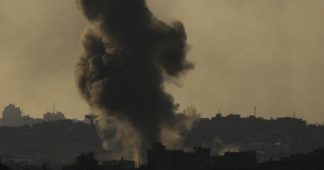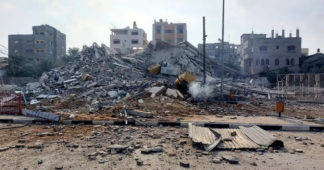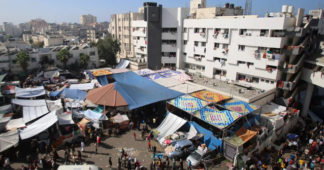By Dennis Small and John Sigerson
Investigative journalist Seymour Hersh reported in his Oct. 24 article “The Mysteries of Oct. 7” that U.S. officials are aware that Israel is considering flooding Hamas’s tunnel system in Gaza. “A well-informed American official told me that the Israeli leadership is known to be considering flooding Hamas’s vast tunnel system before sending in its troops, many of whom have had only a few weeks of training in the maneuvers and coordination required for the invasion. Such an act could mean that Israel was prepared to write off the hostages still in jeopardy.”
Sputnik spoke about Hersh’s report with retired IDF Lt. Col. Dr. Mordechai Kedar, who served for 25 years in IDF military intelligence specializing in Arab political discourse and is a lecturer at Bar-Ilan University in Tel Aviv. Kedar told Sputnik Oct. 25, “I don’t know what Israel is preparing for these tunnels, whether it is bombs or water or whatever.”
He explained that it would “definitely be cheaper to dig a tunnel a few hundred meters, which will stream the water from the sea…. And look, take into account that some of the tunnels are very deep, like 30 meters deep, which is a ten-story-tall building. This is very deep…. According to some data which I have read, the city actually is below sea level. If this is correct, it will not be so hard to make the water from the sea stream into the city. Once the city is covered with water, the water will go down into the ground because the ground is very sandy, and apparently all the tunnels will be flooded, and whoever is in these tunnels will have to swim out or be buried there forever.”
When asked about the consequences of the IDF flooding Gaza, Kedar replied that “whoever started this war with us should have calculated it beforehand. Unfortunately, this ISIS-like organization, they do not make any calculations neither on human lives nor infrastructure. It seems they couldn’t care less about their own people, in their own cities, in their own infrastructure. I think that we don’t have to put so much attention to these questions…. Once the city becomes a lake, I think that the whole of the city is finished and the whole story is finished because it will be a lake. And then maybe this will be the change and this might be the lesson.”
Knowledgeable historians have noted certain parallels with the infamous practices of Genghis Khan. Beginning in 1218, Khan’s Mongol army swept through the rich cities of Khwarazm (around what’s now named the Aral Sea) and farther south, flattening any city which refused to immediately capitulate, killing or enslaving the population, and throwing dead bodies down into the cities’ water-supply and irrigation systems which had been carefully built up over centuries. The decomposing bodies polluted the water for 100 years, rendering these cities uninhabitable.
We remind our readers that publication of articles on our site does not mean that we agree with what is written. Our policy is to publish anything which we consider of interest, so as to assist our readers in forming their opinions. Sometimes we even publish articles with which we totally disagree, since we believe it is important for our readers to be informed on as wide a spectrum of views as possible.











